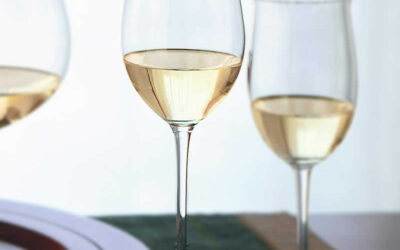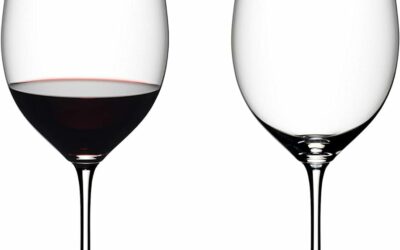Storing wine correctly is pivotal for preserving its quality, enhancing its flavors, and ensuring it ages gracefully. While not every wine is crafted for the long haul, understanding the basics of wine storage can significantly impact your wine appreciation journey. Here’s an expert guide to optimizing your wine storage practices, making every sip worth the wait.
Understanding Wine’s Needs: The Basics of Proper Storage
Key Factors in Wine Storage: Crafting the Perfect Conditions for Aging
Creating the optimal environment for wine storage is akin to curating a sanctuary where your wines can mature gracefully, developing complexity and depth over time. Whether you’re aspiring to build a collection that spans vintages or simply looking to preserve a few special bottles, understanding and controlling the elements of temperature, light, humidity, and vibration is essential. Here’s a deeper exploration of each factor and its impact on wine:
1. Temperature: Maintaining the Ideal Range
Temperature is arguably the most critical factor in wine storage. The recommended range of 50 to 59 degrees Fahrenheit (10 to 15 degrees Celsius) is not arbitrary; it strikes a balance that allows wines to evolve slowly, enabling the development of the nuanced flavors and aromas that only time can unveil.
- Consistency is Key: Perhaps even more important than the specific temperature is its consistency. Fluctuations in temperature can cause the wine to expand and contract, potentially compromising the integrity of the cork and leading to oxidation or seepage.
- Avoiding Extremes: Storing wine in an environment that exceeds 75 degrees Fahrenheit (24 degrees Celsius) can accelerate aging, not gracefully but detrimentally, leading to “cooked” flavors where the delicate balance of fruit, acidity, and tannins is lost.
2. Light: Shielding Wine from Harm
Light, particularly UV rays from direct sunlight, can degrade and prematurely age wine, a phenomenon known as “lightstrike.” This degradation can dull the vibrant qualities of wine, affecting its color and flavor profile.
- Controlled Exposure: While some exposure to light is inevitable, minimizing this exposure is crucial. Dark-colored glass bottles offer some protection, but storing wine in a dark place away from direct sunlight or artificial lights that emit UV rays is preferable.
3. Humidity: Balancing Moisture in the Air
The right level of humidity plays a pivotal role in preserving wine’s integrity over time. A humidity level of around 75 percent is ideal for keeping corks from drying out. Dry corks can shrink, allowing air to enter the bottle and oxidize the wine, ruining its quality.
- Avoiding Excess Moisture: Conversely, too much humidity can promote mold growth, not just on the labels but potentially in the cork itself, which could affect the wine. Balancing humidity is thus essential for long-term storage.
4. Vibration: Ensuring a Tranquil Resting Place
The role of vibration in wine aging is often overlooked, yet constant movement or even periodic disturbances can agitate wine, disrupting its sediment and potentially affecting its aging process.
- Stability is Crucial: Wines benefit from a stable environment where they can rest undisturbed. This is particularly true for wines with significant sediment, as movement can keep the sediment suspended, muddying the wine and detracting from its clarity and taste.
Creating the Ideal Storage Environment
For wine enthusiasts looking to store wines at home, achieving these conditions might seem daunting. However, various solutions range from wine refrigerators, which can maintain consistent temperature and humidity, to wine racks placed in the darkest, most stable part of your home, such as a basement or a closet. For those with the means and passion, designing a custom wine cellar that meticulously controls these factors can be a rewarding investment, enhancing the enjoyment and value of your wine collection.
In summary, proper wine storage is an art that respects the delicate balance of temperature, light, humidity, and vibration. By mastering this art, you ensure that each bottle you carefully select and store will reach its full potential, offering a sensory experience that transcends the ordinary and celebrates the passage of time.
Practical Storage Solutions for Casual Wine Lovers
For the casual wine enthusiast, the journey into wine doesn’t have to involve elaborate cellars or sophisticated climate control systems. Practical, straightforward solutions exist that can significantly improve the longevity and enjoyment of your wine, even if you’re not planning to age it for decades. Let’s delve into accessible strategies for storing your wines under optimal conditions, without the need for a major investment.
1. Identifying the Ideal Spot: Cool, Dark, and Stable
The cornerstone of effective wine storage is finding the right spot in your home that naturally meets most wine storage criteria: cool temperatures, darkness, and stability.
- Cool, Not Cold: Look for an area that stays consistently cool, ideally between 50 to 59 degrees Fahrenheit, but don’t fret if your home runs a bit warmer. Just avoid spots that experience significant temperature fluctuations or get particularly hot.
- Shaded from Light: Wine thrives in the dark. UV rays from sunlight can degrade and prematurely age wine, so choose a location away from direct sunlight. A closet, a cabinet, or even under a bed in a room that doesn’t get too warm can serve as a good spot.
- Away from Vibrations: Find a place that’s free from frequent movements or vibrations. This could mean avoiding areas near laundry rooms, high traffic corridors, or next to doors that are often slammed.
2. Wine Racks: Simple Yet Effective
Investing in a wine rack is a simple yet effective way to store your wines. Wine racks are designed to hold bottles in a horizontal position, which is essential for two reasons:
- Keeping Corks Moist: When bottles are stored on their sides, the wine is in contact with the cork, keeping it moist. This is crucial for preventing the cork from drying out and shrinking, which could let air into the bottle and spoil the wine.
- Efficient Space Usage: Wine racks come in various sizes and designs, making it easy to find one that fits your space and aesthetic preferences. From modular units that grow with your collection to decorative racks that serve as home accents, there’s a solution for every space and budget.
3. Alternatives for Screw-Capped Wines
For wines sealed with screw caps, moisture is not a concern, and vertical storage is perfectly acceptable. This flexibility allows for even more straightforward storage options, including standing racks or repurposed shelves. Screw-capped wines benefit from the same cool, dark conditions as corked wines, so the same general location guidelines apply.
4. Creative Solutions: Beyond the Rack
Not all wine storage needs to come from traditional wine racks. Be creative with your space:
- Repurposing Furniture: An unused cabinet, bookshelf, or even a drawer can be transformed into a wine storage solution. Line them with a soft material to protect the bottles and keep them from rolling.
- DIY Projects: For those who enjoy a bit of DIY, creating custom wine storage that fits into your living space can be a rewarding project. Whether it’s converting a part of a closet into wine storage or building a custom rack, the possibilities are endless.
5. Keeping Track: Inventory and Enjoyment
As your collection grows, keeping a simple inventory can enhance your enjoyment of wine. A spreadsheet, a notebook, or one of many wine apps can help you remember what you have, where it’s stored, and when you might want to drink it.
For casual wine lovers, effective storage doesn’t have to be complicated or expensive. By understanding the basic needs of wine and applying simple solutions, you can significantly enhance your wine drinking experience. Whether you’re saving a bottle for a special occasion or just keeping a few favorites on hand, these practical tips can help ensure that every bottle you open is enjoyable.
Embrace the Moment: Understanding Wine’s Finite Lifespan
Wine, with its intricate balance of flavors, aromas, and textures, offers a unique journey through time. However, like many of life’s finest experiences, it comes with an inherent temporal nature. Proper storage techniques can undoubtedly help preserve and sometimes improve a wine’s character, but it’s crucial to acknowledge that every bottle has its peak, after which its qualities will begin to fade. This recognition brings a valuable perspective to wine collecting and enjoyment, emphasizing the importance of savoring these treasures before their time passes.
The Peak and Decline of Wine
Wines are dynamic; they evolve, developing complexity and nuance with age. Yet, this process is not indefinite. There comes a moment when a wine reaches its peak—a harmonious expression of its essence. Beyond this point, the wine will gradually decline, losing the vibrancy and depth that once defined it. The timing of this peak varies widely among wines, influenced by the grape variety, winemaking style, vintage conditions, and storage environment.
The Misconception of Waiting for Perfection
One common pitfall among wine enthusiasts is the belief that holding onto a bottle indefinitely will lead to a more profound experience. This wait for the perfect occasion often leads to disappointment, as wines might be opened too late, past their prime. The allure of perfection can inadvertently overshadow the real joy of wine: its ability to connect, celebrate, and create memories.
Creating Memorable Moments Through Wine
Wine’s true value lies not just in its taste but in the moments it enhances. Each bottle holds the potential for shared experiences, conversations, and connections. Embracing the opportunity to enjoy wine at its best—whether in quiet contemplation or amidst lively gatherings—can turn ordinary days into memorable occasions.
- Celebrate the Now: Instead of waiting for a grand event, consider creating one. The act of opening a bottle can transform a simple meal into a celebration, turn an evening into an exploration, and elevate gatherings into cherished memories.
- Share the Experience: Wine is inherently social. Sharing a bottle from your collection can enrich relationships, spark dialogue, and forge new bonds. It’s these shared experiences that often become the most treasured memories.
Embracing Wine’s Evanescent Nature
Understanding and accepting the finite lifespan of wine can profoundly shift one’s approach to collecting and enjoyment. It encourages a more mindful presence, urging us to appreciate the beauty of now rather than chase the elusive perfect moment in the future.
The Art of Enjoying Wine
Ultimately, the art of enjoying wine lies in the balance between thoughtful preservation and the spontaneous joy of consumption. By recognizing the limitations of wine’s lifespan and embracing the opportunities to enjoy it, we can fully appreciate the richness it brings to our lives. Wine, in its temporal beauty, reminds us to live in the moment, celebrate the everyday, and cherish the company with whom we share it. Let each bottle opened be a testament to the joy of the present, a moment seized and savored to its fullest.
In Conclusion
Storing wine efficiently isn’t just about preserving a beverage; it’s about cherishing a living artifact that holds stories, craftsmanship, and tradition. By understanding and implementing these essential storage tips, you ensure that each bottle you open is a testament to its journey from vine to glass. Whether you’re a seasoned collector or a casual enthusiast, proper wine storage is key to unlocking the full potential of every sip.




